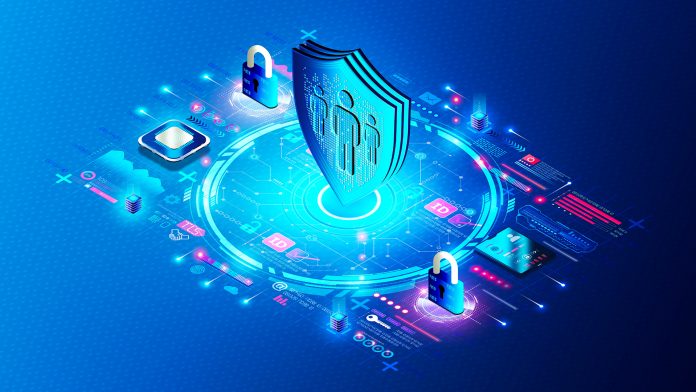Why ITDR Solutions Are Vital for Modern Cybersecurity Strategies

In today’s rapidly evolving digital landscape, cybersecurity has become more critical than ever. As businesses and organizations increasingly rely on digital infrastructure, the need to protect sensitive data and maintain the integrity of networks has grown exponentially. One of the emerging areas in cybersecurity is ITDR (Identity Threat Detection and Response) solutions. These solutions play a crucial role in safeguarding against sophisticated cyber threats that target user identities, making them a vital component of modern cybersecurity strategies.
Understanding ITDR Solutions
To fully appreciate the importance of ITDR solutions, it’s essential to understand what they are and how they function. ITDR solutions are cybersecurity tools designed to detect and respond to threats that specifically target user identities. Unlike traditional security measures that focus on protecting networks and systems, ITDR solutions concentrate on monitoring and defending against attacks on user accounts, credentials, and identity-based systems.
In essence, ITDR solutions provide an additional layer of security by continuously monitoring user behaviour, identifying suspicious activities, and taking proactive steps to prevent unauthorized access. This approach is particularly crucial in a world where cybercriminals increasingly exploit weak or compromised identities to gain access to valuable information.
The Growing Importance of Identity in Cybersecurity
The concept of identity has always been central to cybersecurity, but its significance has grown even more pronounced in recent years. With the rise of cloud computing, remote work, and mobile devices, the traditional network perimeter has blurred, making it harder to secure systems using conventional methods. As a result, identity has become the new security perimeter.
Cybercriminals are well aware of this shift and have adapted their tactics accordingly. Instead of directly attacking well-defended networks, they often target user identities as the weakest link in the security chain. By stealing credentials or exploiting identity-based vulnerabilities, attackers can gain unauthorized access to critical systems, often without detection.
This shift in tactics has made ITDR solutions an essential component of any modern cybersecurity strategy. By focusing on identity-based threats, these solutions help organizations detect and mitigate attacks before they can cause significant damage.
Why ITDR Solutions Are Vital for Modern Cybersecurity Strategies
Now that we understand what ITDR solutions are and why they are important, let’s delve into the specific reasons why they are vital for modern cybersecurity strategies.
- Proactive Threat Detection
One of the key advantages of ITDR solutions is their ability to proactively detect threats. Traditional security measures often rely on reactive approaches, meaning they only respond to threats after they have occurred. In contrast, ITDR solutions continuously monitor user behaviour and identity-related activities in real-time. This proactive approach allows organizations to identify and respond to threats before they can escalate. - Protection Against Insider Threats
Insider threats, whether intentional or accidental, pose a significant risk to organizations. Employees, contractors, and other insiders often have legitimate access to sensitive information, making it difficult to detect malicious activities. ITDR solutions excel in identifying unusual behaviour patterns, such as unauthorized access or data exfiltration, which could indicate an insider threat. By detecting these activities early, organizations can take appropriate actions to prevent data breaches and other security incidents. - Enhanced Incident Response
In the event of a security breach, the speed and effectiveness of the incident response can make all the difference. ITDR solutions not only detect identity-based threats but also provide valuable insights into the nature and scope of the attack. This information is critical for an effective incident response, enabling security teams to contain the breach, mitigate its impact, and prevent future incidents. - Reduced Risk of Credential-Based Attacks
Credential-based attacks, such as phishing and credential stuffing, are among the most common and effective tactics used by cybercriminals. ITDR solutions help mitigate the risk of these attacks by continuously monitoring user credentials and detecting signs of compromise. When suspicious activities, such as multiple failed login attempts or access from unusual locations, are detected, ITDR solutions can trigger alerts and enforce additional security measures, such as multi-factor authentication (MFA). - Compliance with Regulatory Requirements
Many industries are subject to strict regulatory requirements regarding data protection and cybersecurity. Compliance with these regulations often requires organizations to implement robust security measures to protect user identities and sensitive information. ITDR solutions can help organizations meet these requirements by providing the necessary tools and capabilities to monitor, detect, and respond to identity-based threats effectively. - Adaptation to Evolving Threats
The cybersecurity landscape is constantly evolving, with new threats emerging regularly. ITDR solutions are designed to adapt to these changes by continuously updating their threat detection capabilities. This adaptability ensures that organizations remain protected against the latest tactics and techniques used by cybercriminals.
ITDR Solutions: A Closer Look
In this section, we’ll take a closer look at ITDR solutions and how they work. Understanding the components and functionalities of these solutions will provide deeper insights into their role in modern cybersecurity strategies.
Identity Monitoring
One of the core components of ITDR solutions is identity monitoring. This involves the continuous tracking of user behaviour and activities related to identities. By monitoring login attempts, access patterns, and changes in user privileges, ITDR solutions can detect anomalies that may indicate a potential threat.
For example, if an employee typically logs in from a specific location during business hours but suddenly accesses the system from a different country in the middle of the night, this could be a sign of a compromised account. ITDR solutions would flag this activity as suspicious and trigger an alert for further investigation.
Threat Detection and Analysis
Once an anomaly is detected, ITDR solutions use advanced threat detection and analysis techniques to determine the nature of the threat. This may involve analysing the behaviour of the user, the devices they are using, and the context of the activity. By correlating this information with known threat patterns, ITDR solutions can assess the level of risk and determine the appropriate response.
Automated Response and Remediation
One of the key strengths of ITDR solutions is their ability to automate response and remediation actions. When a threat is detected, the system can automatically take steps to mitigate the risk. This might include locking the compromised account, enforcing MFA, or blocking access to sensitive data.
Automation is crucial in modern cybersecurity, where the speed of response can significantly impact the outcome of a security incident. By automating routine tasks, ITDR solutions allow security teams to focus on more complex issues and reduce the time it takes to contain and resolve threats.
Integration with Other Security Tools
ITDR solutions are most effective when integrated with other security tools and systems. This integration allows for a more comprehensive approach to cybersecurity, where identity-based threats are detected and mitigated in the context of the broader security landscape.
For example, ITDR solutions can be integrated with Security Information and Event Management (SIEM) systems, Endpoint Detection and Response (EDR) tools, and network security devices. This integration enables organizations to correlate identity-related threats with other security events, providing a more holistic view of the security environment.
Challenges in Implementing ITDR Solutions
While ITDR solutions offer significant benefits, implementing them can come with challenges. It’s essential to be aware of these challenges to ensure a successful deployment.
Complexity and Integration
One of the primary challenges in implementing ITDR solutions is the complexity of integration with existing systems. Organizations often have a variety of security tools in place, and integrating ITDR solutions with these tools can be complex and time-consuming. It’s crucial to plan the integration carefully to ensure that the ITDR solution works seamlessly with other security measures.
Resource Requirements
Deploying and maintaining ITDR solutions can require significant resources, including time, money, and expertise. Organizations need to invest in the right technology, train staff to use the system effectively, and allocate resources for ongoing monitoring and maintenance. Smaller organizations with limited resources may find this challenging.
Balancing Security and User Experience
While ITDR solutions are designed to enhance security, they can also impact the user experience if not implemented carefully. For example, frequent prompts for MFA or account lockouts due to suspicious activity can frustrate users. Organizations need to strike a balance between security and usability, ensuring that ITDR solutions protect against threats without creating unnecessary friction for legitimate users.
The Future of ITDR Solutions
As cyber threats continue to evolve, ITDR solutions will play an increasingly important role in modern cybersecurity strategies. The future of ITDR is likely to involve greater automation, improved threat detection capabilities, and enhanced integration with other security tools.
Greater Automation
As ITDR solutions become more sophisticated, we can expect to see greater automation of threat detection and response processes. This will allow organizations to respond to threats more quickly and effectively, reducing the time it takes to mitigate risks.
Advanced Threat Detection
The development of advanced threat detection techniques, such as machine learning and artificial intelligence, will enhance the capabilities of ITDR solutions. These technologies can analyse vast amounts of data to identify patterns and predict potential threats, enabling more proactive security measures.
Enhanced Integration
The future of ITDR solutions will likely involve enhanced integration with other security tools and systems. This will enable organizations to take a more comprehensive approach to cybersecurity, where identity-based threats are detected and mitigated in the context of the broader security landscape.
Conclusion
In conclusion, ITDR solutions are vital for modern cybersecurity strategies. As cybercriminals increasingly target user identities, organizations must implement robust measures to detect and respond to identity-based threats. ITDR solutions provide the necessary tools and capabilities to protect against these threats, ensuring the security and integrity of sensitive data and systems.
While implementing ITDR solutions can come with challenges, the benefits far outweigh the costs. By investing in ITDR solutions, organizations can enhance their cybersecurity posture, protect against a wide range of threats, and ensure compliance with regulatory requirements.
As the cybersecurity landscape continues to evolve, ITDR solutions will play an even more critical role in safeguarding against emerging threats. By staying ahead of the curve and adopting these solutions, organizations can protect their digital assets and maintain the trust of their customers and stakeholders.





